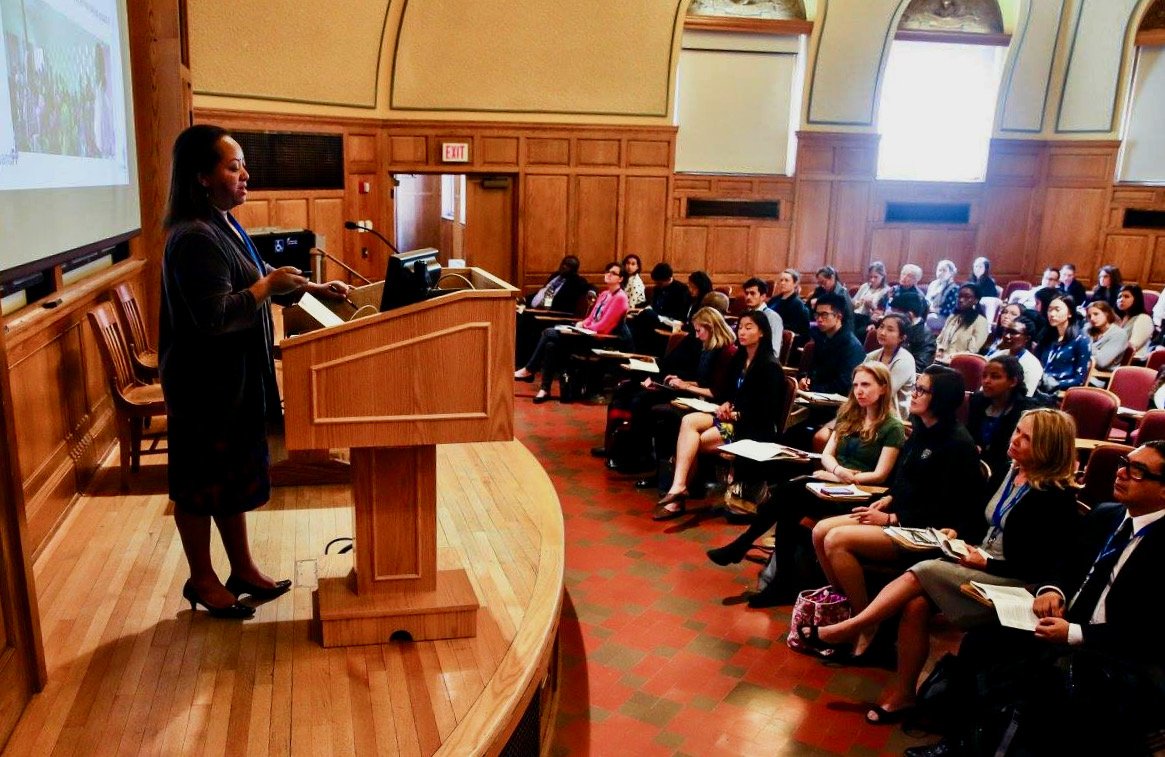
HEALTH EDUCATION STRATEGIES CERTIFICATE
Module 1: Effective Health Education
Grassroots development is seen by many as the means by which underserved communities can “have a voice, invested interest, and ownership in the development of their land, economy, education, rights, and values.”(1) Sometimes, as seen in the following case study, even those involved in development work “on the ground” can be ineffective if the right questions are not asked.
Before a strong stance on HIV education was adopted by governmental leadership in Thailand in the early 1990s, HIV/AIDS severely threatened national health infrastructure and general stability. Even after the implementation of a pervasive public information campaign and condom distribution plan, the country still battles to keep its prevalence rate low.(2) It was in this environment that Peace Corps volunteers tried to do condom demonstrations for villagers in an effort to contribute to the national goals of HIV-transmission reduction.
“In the old days volunteers used bananas in the demonstration but switched to wooden replicas when they discovered that some participants went home and actually put condoms on bananas thinking it had some sort of power to keep them safe.”(3)
HIV/AIDS education and prevention is a large part of the work carried out by Peace Corps volunteers working in health sectors of Africa, the Caribbean, Eastern Europe, and Central Asia.(4) While encouraging condom use “is a critical element in a comprehensive, effective and sustainable approach to HIV prevention and treatment,” the way that the educational material is communicated to its target audience must be adapted to local cultural circumstances to avoid ineffectiveness in health programs.(5) A document published by the United Nations Population Fund, UNAIDS, and the World Health Organization states that:
“Condoms must be readily available universally, either free or at low cost, and promoted in ways that help overcome social and personal obstacles to their use.”
“HIV prevention education and condom promotion must overcome the challenges of complex gender and cultural factors.”(6)
Recognition of and respect for such cultural factors and social obstacles can be achieved through “cultural competence.” Achieving this competence “implies having the capacity to function effectively as an individual and an organization within the context of cultural beliefs, behaviors, and needs presented by consumers and their communities.”(7) This includes involving the community in pinpointing issues and generating solutions, collaborating with other local agencies to determine best practices, and evaluating receptivity to and outcomes of community-based endeavors. In addition to a more meticulous examination of the culturally acceptable methodologies of knowledge dissemination, a “cultural broker”—a liaison between outsiders and insiders who understands “the health values, beliefs, and practices within their cultural group or community”—might have been helpful in the Peace Corps volunteers’ situation as well.(8)
For a brief counterexample of how community health education about sexually transmitted diseases can be done effectively, we look to a case study from the Asaro Valley of the Eastern Highlands Province of Papua New Guinea. In their preliminary investigation, researchers found that while the national prevalence of some STDs is high—with 25% of people having Chlamydia and 45% of women suffering from trichomonal vaginitis—knowledge about how STDs are transmitted is low. Before they started their health education workshops, researchers sought the guidance of a professional health educator from the country’s Division of Health. The native specialist shared the teaching techniques to which she thought Papua New Guineans would best respond. These included lectures, visual aids, group discussions, one-on-one health education, interviews, and demonstrations. These techniques were then tested and evaluated in various community settings to determine which were most well-received.
In the beginning, teaching aids included “cardboard models and puppets, line drawings of basic reproductive anatomy and drawings of people engaging in various activities or showing signs and symptoms of disease.” Also, educators utilized both bananas and wooden penis models for condom demonstrations. When villagers voiced discontent about the explicit nature of the materials, researchers adapted by asking village representatives to preview the materials before they were used in the workshops.(9) This action expressed to the villagers that the researchers were flexible in their methods, accommodating to cultural beliefs about sexuality, and sensitive to participants’ discomfort. “[E]nthusiastic support from the leaders” also helped augment the researchers’ credibility.(10) Researchers found that the majority of women had never seen nor used a condom. Hence, it was “important to demonstrate their use, and also to get the participants to handle them and, if possible, practice putting them on the models.” Contrary to the necessary changes in Peace Corps condom demonstration protocol, “bananas worked better than wooden penis models, because the women were less embarrassed about handling them.”(11)
The lesson that can be learned about the difference between the first approach in Thailand and the approach of researchers in Papua New Guinea is simple: merely working “on-the-ground” is not enough to create a successful bottom-up approach. It takes cultural competence, intensive assessment of community values, adjustment to cultural preferences, and space for open dialogue and feedback to implement an efficacious health education campaign.
Footnotes
(1) “Why Grassroots Development?” Foundation for Sustainable Development. http://www.fsd.org/.
(2) Avert. “HIV & AIDS in Thailand.” https://www.avert.org/professionals/hiv-around-world/asia-pacific/thailand.
(3) Schimmelpfennig, S. “Mosquito nets, condoms and recycling.” Good Intentions Are Not Enough: An honest conversation about the impact of aid. Posted on 22 September 2009. https://www.cidi.org/mosquito-nets-condoms-and-recycling/#.U-YfCLvMCbM.
(4) Peace Corps. “All about HIV and AIDS.” https://www.peacecorps.gov/educators/resources/all-about-hiv-and-aids/.
(5) UNAIDS, World Health Organization, United Nations NFPA. (July 2004). “Position Statement on Condoms and HIV Prevention.”https://data.unaids.org/una-docs/condom-policy_jul04_en.pdf.
(6) Ibid.
(7) National Prevention Information Network. “Cultural Competence.” https://npin.cdc.gov/pages/cultural-competence#:~:text=Cultural%20competence%20requires%20that%20organizations,to%20work%20effectively%20cross%2Dculturally.
(8) National Prevention Information Network. (2004). “Who Is the Cultural Broker?” https://nccc.georgetown.edu/documents/Cultural_Broker_Guide_English.pdf
(9) Horton, K., Lupiwa, S., Passey, M., and Suve, N. “Knowledge about sexually transmitted diseases in rural and periurban communities of the Asaro Valley of Eastern Highlands Province: the health education component of an STD study.” Papua New Guinea Medical Journal. 39.3: 244.
(10) Ibid, page 245.
(11) Ibid.
